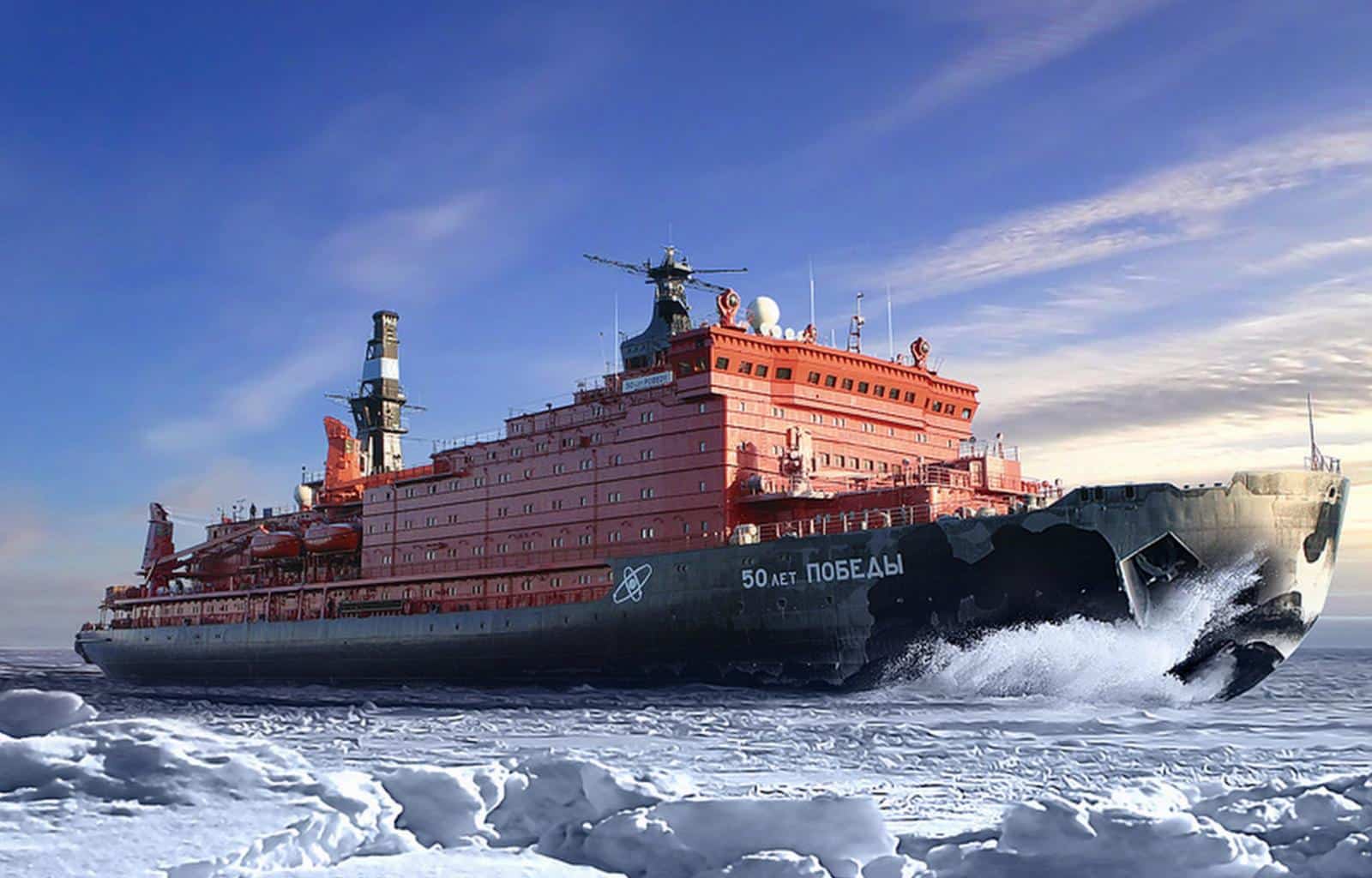What’s in today’s article:
- India’s involvement in Arctic
- News Summary
Why In News:
- Russian President virtually presided over the launch and flag raising ceremony of two nuclear-powered icebreakers.
- He said such icebreakers were of strategic importance as climate change opens up the Arctic giving access to new route and resources.
India’s involvement in Arctic
- Initial Phase
- India’s engagement with the Arctic dates back to 1920 with the signing of the Svalbard Treaty in Paris.
- India is one of the very few countries to set up a permanent station in the Arctic for the purposes of scientific research.
- It launched its first scientific expedition to Arctic in the first week of August, 2007.
- Subsequently, India has been sending scientific teams every summer and winter for carrying out studies in the Arctic.
- Indian studies are primarily focused in the fields of glaciology, hydrochemistry, microbiology, and atmospheric sciences.
- Subsequent involvement
- Himadri research station, located in Ny Alesund, Svalbard in Norway, was started in July 2008.
- In 2014, India deployed IndArc, a multisensory observatory in Kongsfjorden.
- In 2016, India’s northernmost atmospheric laboratory was established at Gruvebadet.
- It was established to study clouds, precipitation, long-range pollutants, and other background atmospheric parameters.
- India is an observer in the Arctic Council
- India is Observer to the Arctic Council since 2013. Its membership as an observer was renewed in 2019 for another five years.
- The Council is the leading intergovernmental forum promoting cooperation on common Arctic
- Established by the eight Arctic States — the countries whose territories fall in the Arctic region — through the Ottawa Declaration of 1996.
- Member Nations of the Council – Canada, Kingdom of Denmark, Finland, Iceland, Norway, Russian Federation, Sweden and United States.
- India is Observer to the Arctic Council since 2013. Its membership as an observer was renewed in 2019 for another five years.
- Arctic Policy launched
- In March 2022, the Indian government unveiled an Arctic policy.
- It envisages India’s engagement in the Arctic region for climate research, environmental monitoring, maritime cooperation and energy security.
- The National Centre for Polar and Ocean Research (under the Ministry of Earth Sciences) will serve as the nodal agency in implementing the Arctic Policy.
News Summary
- President Putin presided over the flag-raising ceremony and dock launch for two nuclear-powered icebreakers that will ensure year-round navigation in the Western Arctic.
Key highlights:
- The 173.3-metre Yakutia, with a displacement of up to 33,540 tonnes, was launched into water. It can smash through ice of up to three metres. It will join service by end-2024.
- The flag was raised on another vessel Ural. It is expected to become operational in December.
- Two other icebreakers in the same series, the Arktika and the Sibir, are already in service and another, the Chukotka, is scheduled for 2026.
- Super-powerful nuclear icebreaker known as Rossiya, with a displacement of up to 71,380 tonnes, would be completed by 2027. It will be able to break through ice four metres thick.
Significance for Russia
- Strengthen Russia’s status as a great Arctic power
- Both icebreakers are part of our large-scale, systematic work to re-equip and replenish the Russian icebreaker fleet.
- This will strengthen Russia’s status as a great Arctic power.
- Strategic significance of Arctic
- The Arctic is taking on greater strategic significance due to climate change, as a shrinking ice cap opens up new sea lanes.
- There has been a race among Arctic states and near-arctic states to augment their capabilities in a bid to be ready to capitalize on the melting Arctic.
- Eg., NATO has been conducting regular exercises in the region. China, which calls itself near-Arctic state, has also announced ambitious plan for polar silk route to connect to Europe.
- Unlike Antarctica, the Arctic is not a global common.
- Vast oil and gas resources lie in Russia’s Arctic regions, including a liquefied natural gas plant on the Yamal Peninsula.
- As the earth further heats up, which is more profound at the poles, the race for the Arctic is set to accelerate. This makes the Arctic the next geopolitical hotspot.
- For development of the Arctic
- These vessels are needed for the study and development of the Arctic, to ensure safe, sustainable navigation in this region, to increase traffic along the Northern Sea Route.
- The development of this most important transport corridor will allow Russia to more fully unlock its export potential and establish efficient logistics routes, including to Southeast Asia.
- This route, often called as Northern Sea Route, cuts down time to reach Asia by up to two weeks compared to the current route via the Suez Canal.
Last updated on November, 2025
→ Check out the latest UPSC Syllabus 2026 here.
→ Join Vajiram & Ravi’s Interview Guidance Programme for expert help to crack your final UPSC stage.
→ UPSC Mains Result 2025 is now out.
→ UPSC Notification 2026 is scheduled to be released on January 14, 2026.
→ UPSC Calendar 2026 is released on 15th May, 2025.
→ The UPSC Vacancy 2025 were released 1129, out of which 979 were for UPSC CSE and remaining 150 are for UPSC IFoS.
→ UPSC Prelims 2026 will be conducted on 24th May, 2026 & UPSC Mains 2026 will be conducted on 21st August 2026.
→ The UPSC Selection Process is of 3 stages-Prelims, Mains and Interview.
→ UPSC Result 2024 is released with latest UPSC Marksheet 2024. Check Now!
→ UPSC Prelims Result 2025 is out now for the CSE held on 25 May 2025.
→ UPSC Toppers List 2024 is released now. Shakti Dubey is UPSC AIR 1 2024 Topper.
→ UPSC Prelims Question Paper 2025 and Unofficial Prelims Answer Key 2025 are available now.
→ UPSC Mains Question Paper 2025 is out for Essay, GS 1, 2, 3 & GS 4.
→ UPSC Mains Indian Language Question Paper 2025 is now out.
→ UPSC Mains Optional Question Paper 2025 is now out.
→ Also check Best IAS Coaching in Delhi

















